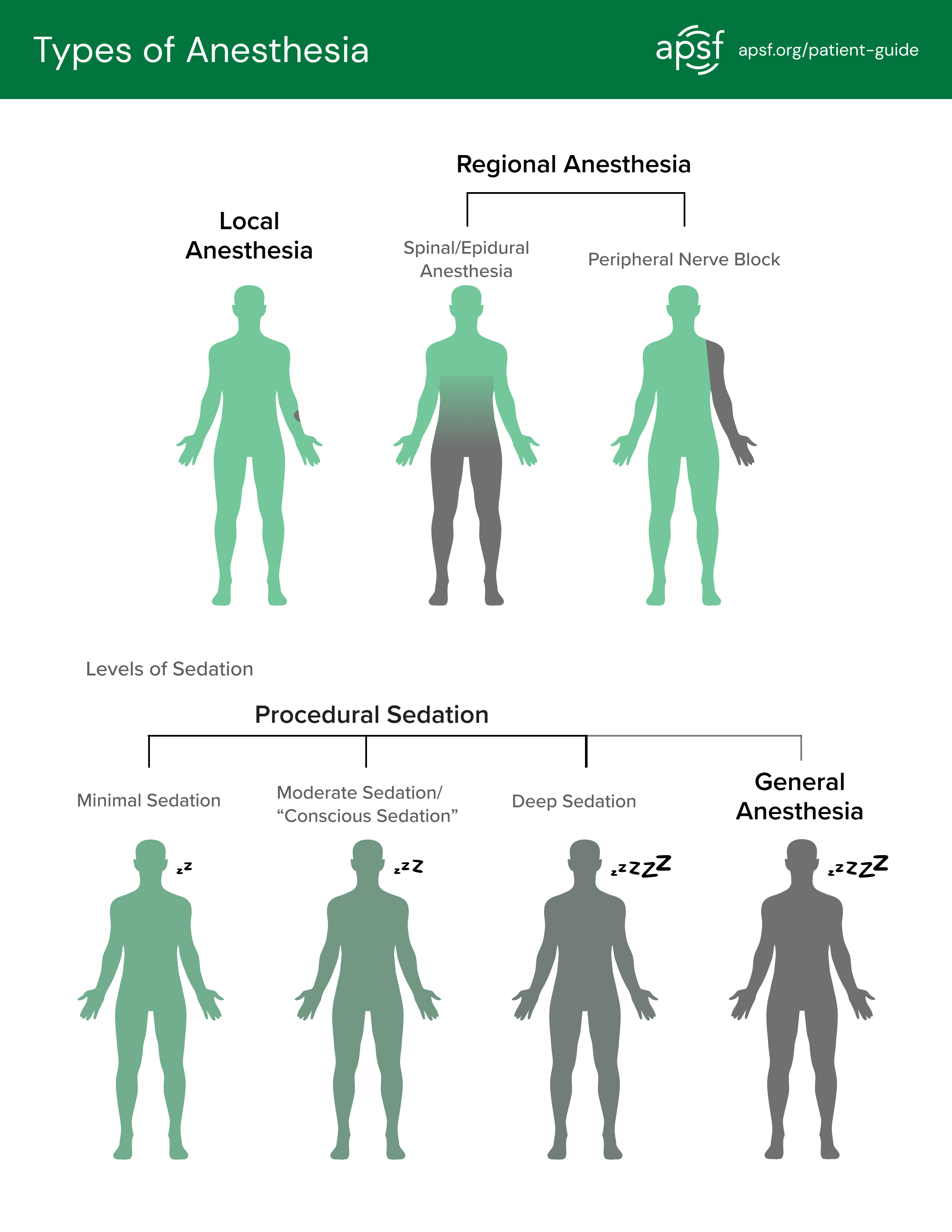What are the Types of Anesthesia?
Anesthesia is used to prevent pain and discomfort during medical procedures. There are four main types of anesthesia. Each can be used in different situations depending on the nature of the procedure and the patient’s needs.
Local Anesthesia.
Local anesthetics are used to numb a small, specific area of the body. The patient remains awake and alert, feeling no pain in the numbed area. It is used for minor procedures like stitching a wound or dental work.
Administration: typically injected but can also be applied topically (as a cream or spray).
Regional Anesthesia.
For this type of anesthesia, local anesthetics are used to numb a larger part of the body. It is used in procedures involving limbs or entire lower parts of the body. Patients are typically given sedatives to help with anxiety and discomfort, but they can remain awake.
Common Types (Administration):
- Epidural Anesthesia: Injection that can be given continuously through a catheter (tiny tube) placed outside the epidural space of the spinal cord. This provides longer pain relief often required in childbirth.
- Spinal Anesthesia: Typically a single injection directly into the cerebrospinal fluid in the lower back. This provides potent pain relief lasting 1-2 hours. It is often used for surgeries of the lower abdomen, pelvis, and legs.
- Peripheral Nerve Blocks: Involves injecting anesthetic near a specific nerve or group of nerves to block sensations in a particular area. These blocks are used for surgeries involving hands and limbs.
Sedation.
Sedation is the use of various drugs to induce a state of relaxation, drowsiness, or decreased awareness. The levels of sedation range from minimal sedation to full sedation, also known as general anesthesia. However, the term ‘sedation’ typically refers to ‘procedural sedation’, which includes the three levels of sedation that occur before reaching general anesthesia. These are:
- Minimal Sedation (Anxiolysis): The patient feels relaxed and may be awake but feels drowsy. The patient can respond normally to verbal commands. This is often used before surgery or other medical procedures to ease anxiety.
- Moderate Sedation/“Conscious Sedation”: The patient is more deeply relaxed and may slur speech. They can respond to verbal commands or light touch. This is used for procedures where the patient needs to be relaxed but not fully unconscious, such as endoscopy or minor surgical procedures.
- Deep Sedation: The patient is on the edge of consciousness and not easily awakened. They can respond to repeated or painful stimulation. Deep sedation is often used for more invasive procedures such as colonoscopies.
Administration: orally, intravenously (IV) and/or inhaled (gasses or vapors).
General Anesthesia.
General aesthesia is a medically induced state of unconsciousness used for major surgical procedures. It involves potent medications that suppress central nervous system activity and reflexes, leading to a complete loss of awareness and sensation. The patient’s vital signs are closely monitored and an airway device is often used to support breathing.
Administration: intravenously (IV) and/or inhaled (gasses or vapors).



